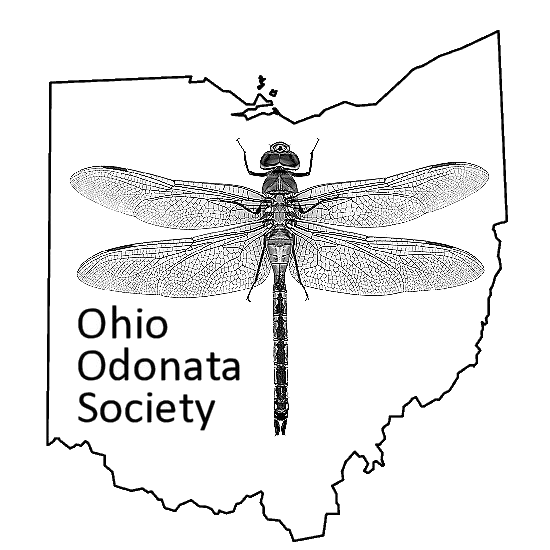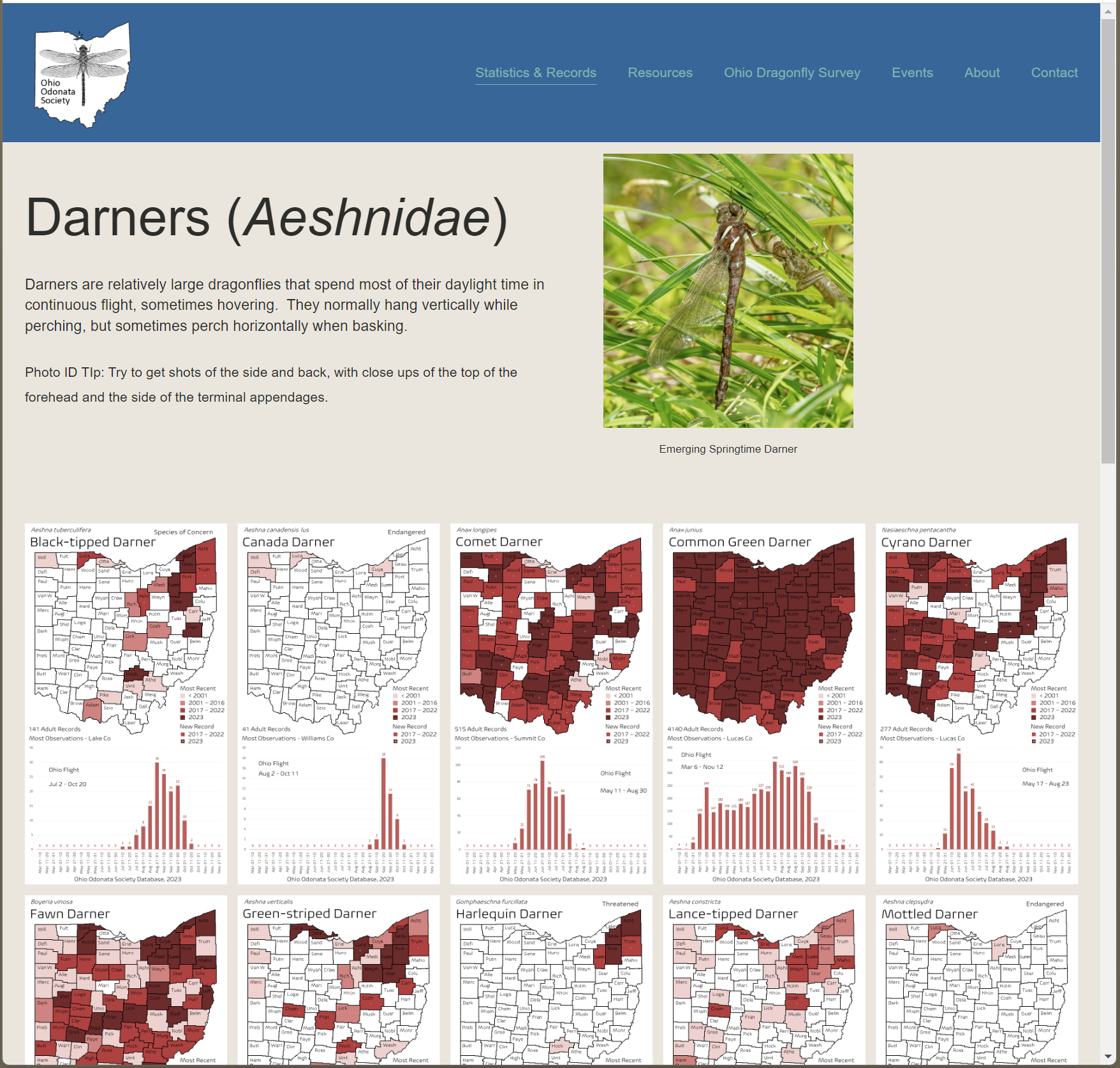Announcing the Third Generation Ohio Odonata Society Website
In 2000, The Ohio Odonata Society implemented one of the Internet’s first web sites on the topic of dragonflies. Today, we are announcing the launch of our latest online presence. It includes updated species distribution and flight maps, county-level statistics on species and observation activity, and a growing body of information on natural history and field craft.
Generation 1: 2000-2016
First Ohio Odonata Society website as it appeared in May 2001
This early site provided 15 years of service to citizen science.
In 2000, the Ohio Society’s new website was not just innovative within the category of entomology, it was one of the few web sites supporting any type of natural history community. The first web browser had only been introduced 7 years earlier, and web server content still had to be manually formatted by someone who was familiar with Hyptertext Markup Language (HTML). It was hosted by Ohio’s Marietta College, which graciously allowed the Society to maintain its presence for 15 years.
Generation 2: 2017-2022
In May 2017, the second generation site was launched.
The Ohio Dragonfly Survey website
The second website supported the Survey and OOS from 2017 to 2022.
To facilitate the second Ohio Dragonfly Survey, which began in 2016, Ohio State provided the Survey Coordinator, MaLisa Spring, with space on their server. It was instrumental in coordinating the state survey and in encouraging participation.
Generation 3: 2024
2024 Ohio Odonata Society website:
Darner Family Page
Built within a modern web hosting service, the new site enables us to explore more ways to share survey data and support our citizen science mission.
The new site is intended as a convenient and effective source of information about Ohio’s odonata population, including information about on going observation activity. It contains a repository of material from the summer conferences, back issues of Dragon Flyer journals, a list of links to other relevant sites, and a growing body of ‘how to’ information on odonata natural history, fieldcraft, and photography. Most of the material from the OSU server has been transferred over to the new site (including original publication dates). The new site provides the latest compilation of observation data, organized around species, species family, and county, incorporating observations through calendar year 2023. This is the first time in several years that up-to-date county species lists have been available on line.
County species list pages
County pages provide information useful for research and trip planning. Species tables include links to the relevant iNaturalist pages, and the state maps are clickable, making it easy to navigate between counties. New content formatting features supporting the smaller screens of mobile devices ensure that this information is accessible when doing field work.
Each of the 88 county pages provides a table of all the species that have been observed in the county, followed by an additional table listing species that have been observed in neighboring counties, but not yet in the target county. Both of these tables can be sorted by clicking in a column header. Eventually, every county page will have a brief paragraph on its natural history, listing any significant characteristics or geographic features. To help you better understand county oda distribution, an iNaturalist link opens up an iNaturalist observation page with the county outlined, showing all non-obscured odonate observations within the target county. This is especially useful when planning visits. To encourage more field work, we are building out a list of ‘oda hotspots’ in each county (contact us if you have suggestions for ‘Places to Visit’).
The support of Ohio’s higher educational institutions in providing over two decades of web hosting has been invaluable in advancing science, and encouraging greater interest in this fascinating and important domain. At the start of our third decade, our regional natural history society is starting another information sharing experiment using an independently sourced web hosting service. We hope that the new site will be a benefit to all Ohio inhabitants and visitors, two-and six-legged.




